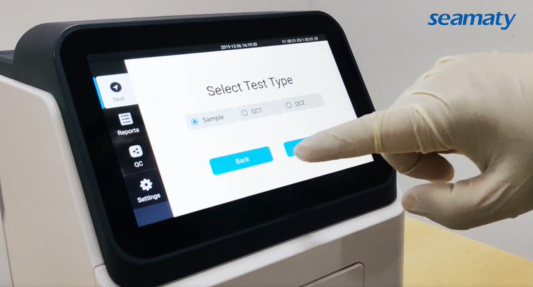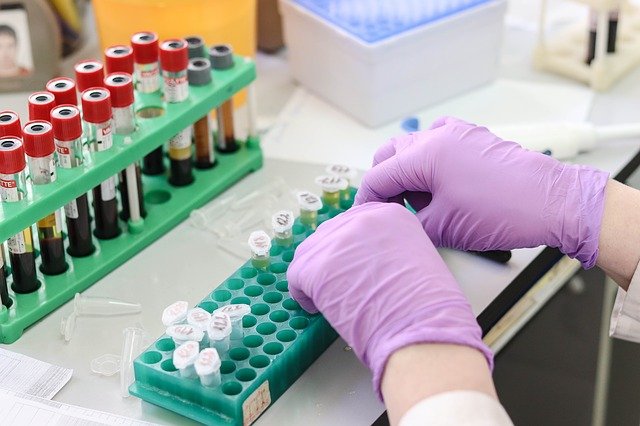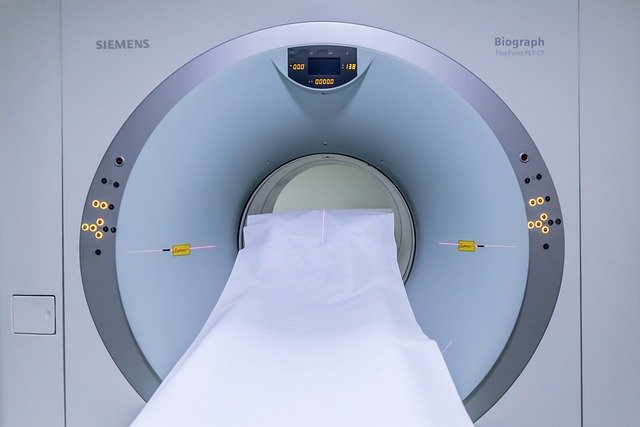POCT is a segment of the IVD industry, and is one of the fastest growing segments of the IVD market in recent years. With the continuous progress of biotechnology, there are two major trends in medical devices: one is more "high, precise and complete", and the other is "simple, convenient and personal health management".
POCT devices has the characteristics of fast results and convenience (small amount of sample processing, simple operation). In the case of acute diseases, the time of diagnosis is extremely critical. In the case of infectious disease outbreaks, screening efficiency is critical. When it comes to the management of chronic diseases such as glucose monitoring, simplicity is the smart choice. POCT is a unique presence as far as IVD classification is concerned. It is not classified based on sample type or method, but is proposed based on application scenarios.
Small handheld POCT devices
There are a variety of small POCT devices on the market, ranging from simple blood glucose meters to blood gas analyzers, portable biochemistry analyzers, etc. These devices are truly portable and are often used by the patient themselves or by a healthcare professional near the patient, such as at the bedside, in a clinic or in the patient's home.
Their portability means that the way these devices are used (i.e., the operational workflow) is often different from the use of large or benchtop devices. POCT devices offer precise quantification, simplicity of operation, and affordability. For example, small portable devices often use capillary samples applied directly to the POCT instrument without the need for sample containers or transfers.
Larger benchtop POCT devices
Such instruments are designed to overlap with some of the instruments used in central laboratories. They are usually variations of equipment used in traditional laboratories. Such devices can be moved to outpatient clinics, hospitals and community health departments after providing services such as testing for diagnosis and care. Larger benchtop POCT devices have high throughput and high accuracy.
Since such devices are often used in resource-poor locations. Medical device manufacturers therefore need to reduce the size and complexity of their equipment so that it can be operated by personnel without laboratory training. Technologies such as miniaturization and computers are facilitating the successful development of such devices to meet these needs.
Chip-based POCT devices
With the advent of chip-based laboratories, highly integrated, automated and
miniaturized POCT devices have steadily evolved.
Such devices are defined as performing analysis at the microscopic scale (typically 1-500µm) and contain microfilters, microchannels, microarrays, micropumps, microvalves, and bioelectronic chips. Microchips integrate the entire analytical process from sample placement on the chip to analysis into a single reaction cell, avoiding sample cross-contamination and enabling a high degree of integration and automation. The translation of these devices into commercial devices for POCT has proven to have high technical barriers.
There is a wide range of products on the market that are of varying quality. So, what characteristics should the ideal larger benchtop POCT device have?
● Fast and reliable response: the test should last less than an hour, and the procedure should be as simple as possible, with as few steps as possible, and conform to the basic rules of good laboratory practice.
● Accuracy: The sensitivity and accuracy of the test should meet the regulatory limits required for the particular application. ● Improved performance of traditional medical device tests to allow medical decisions to be made without further expensive testing, reducing the impact on public health costs
● Ease of use: tests should be easy to perform by unskilled personnel with simple training, and test results should be clear and easy to understand
● Self-control: Once the user simply collects the sample and feeds it into the device, sample handling, analysis, data interpretation and waste product storage should be as free as possible from user intervention
● Portable and durable: Tests should be performed in the field as much as possible, which means that the product should be portable, durable, suitable for different means of transportation, and have a long shelf life, even if the instrument does not require electricity to work and consumables do not need to be refrigerated
● Low cost: Public healthcare systems, users and patients should be able to afford these devices or platforms. These tests should be cheaper than standard tests and should reduce the cost of patient care.
● Multiplex capability: The ability of multiplex immediate tests (xPOCT) to perform multiple analyses simultaneously allows for complete characterization of biological samples and improved clinical diagnosis.
While these requirements may seem simple, they pose significant design and manufacturing challenges for IVD companies. Most notably, many POCT products require more complex disposables containing multiple reagents that can only handle one sample at a time compared to higher volume laboratory instruments. With this increase in technical complexity, the product development team took a systematic approach to designing POCT products to ensure integration of disposables and instrument design and to minimize costly design rework.
In addition to this, when designing POCT devices, IVD companies should consider material compatibility requirements, differences in prototyping and production methods, and distribution logistics. All of these factors can affect the path to commercialization of a POC instrument.


